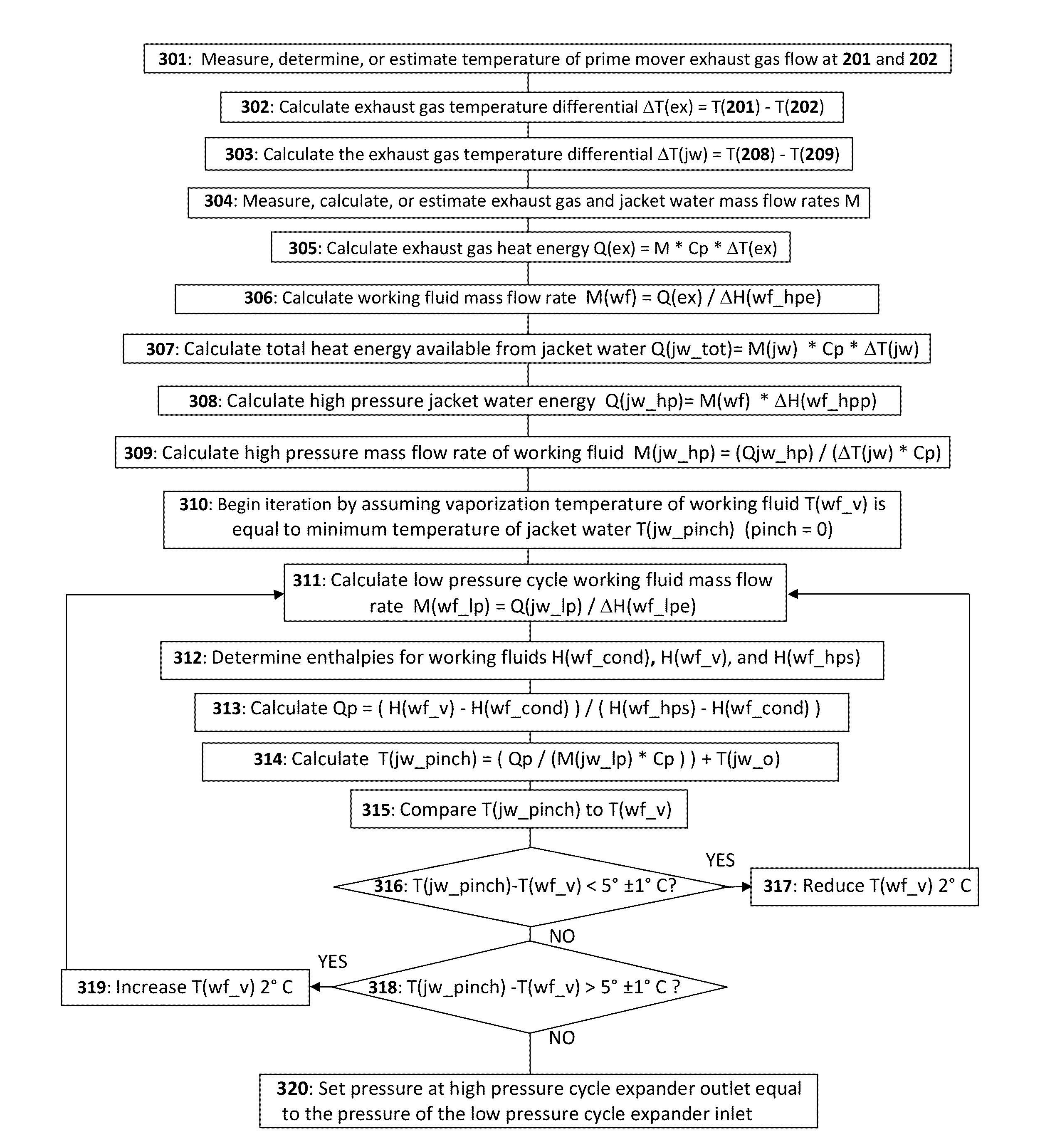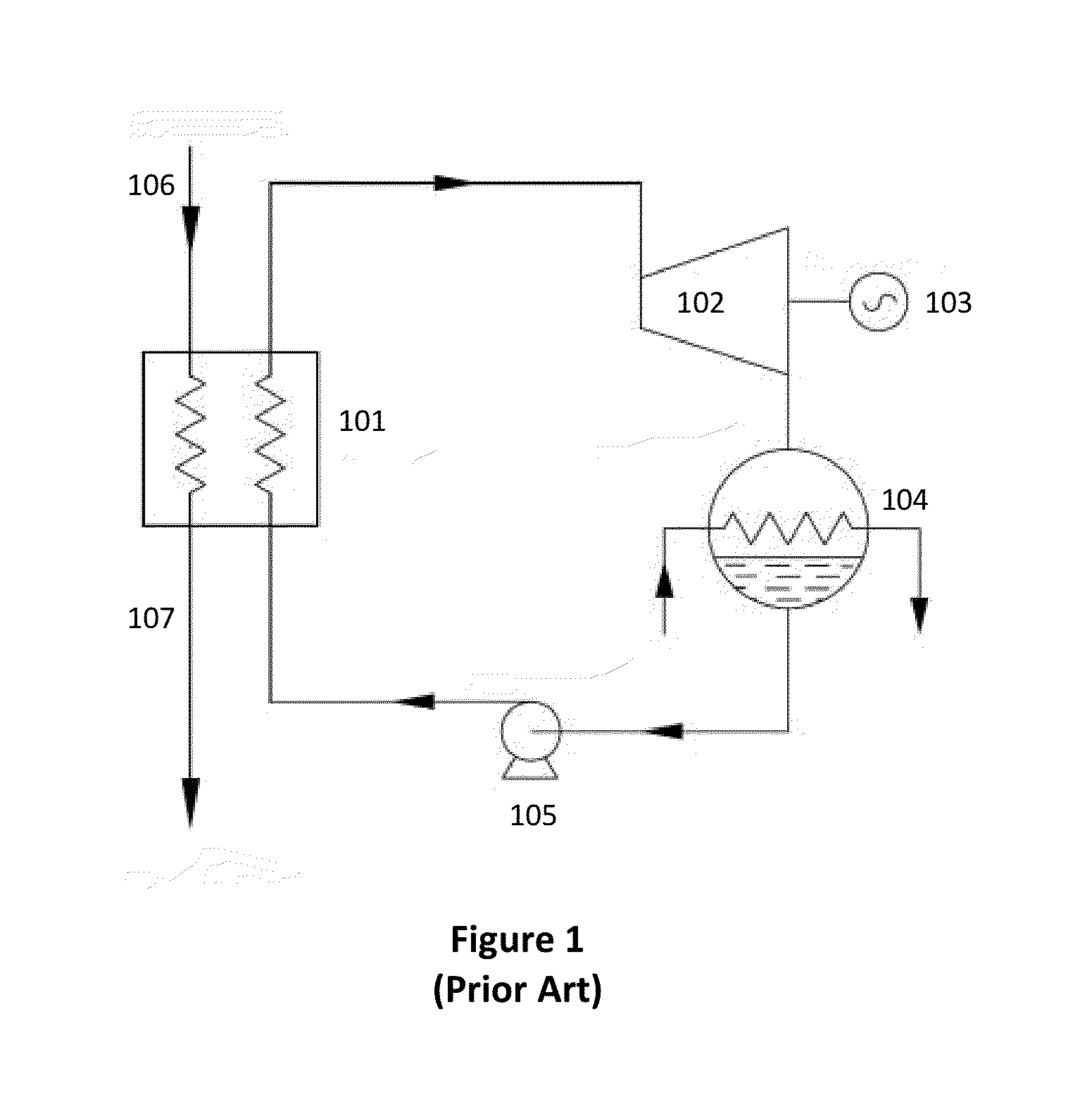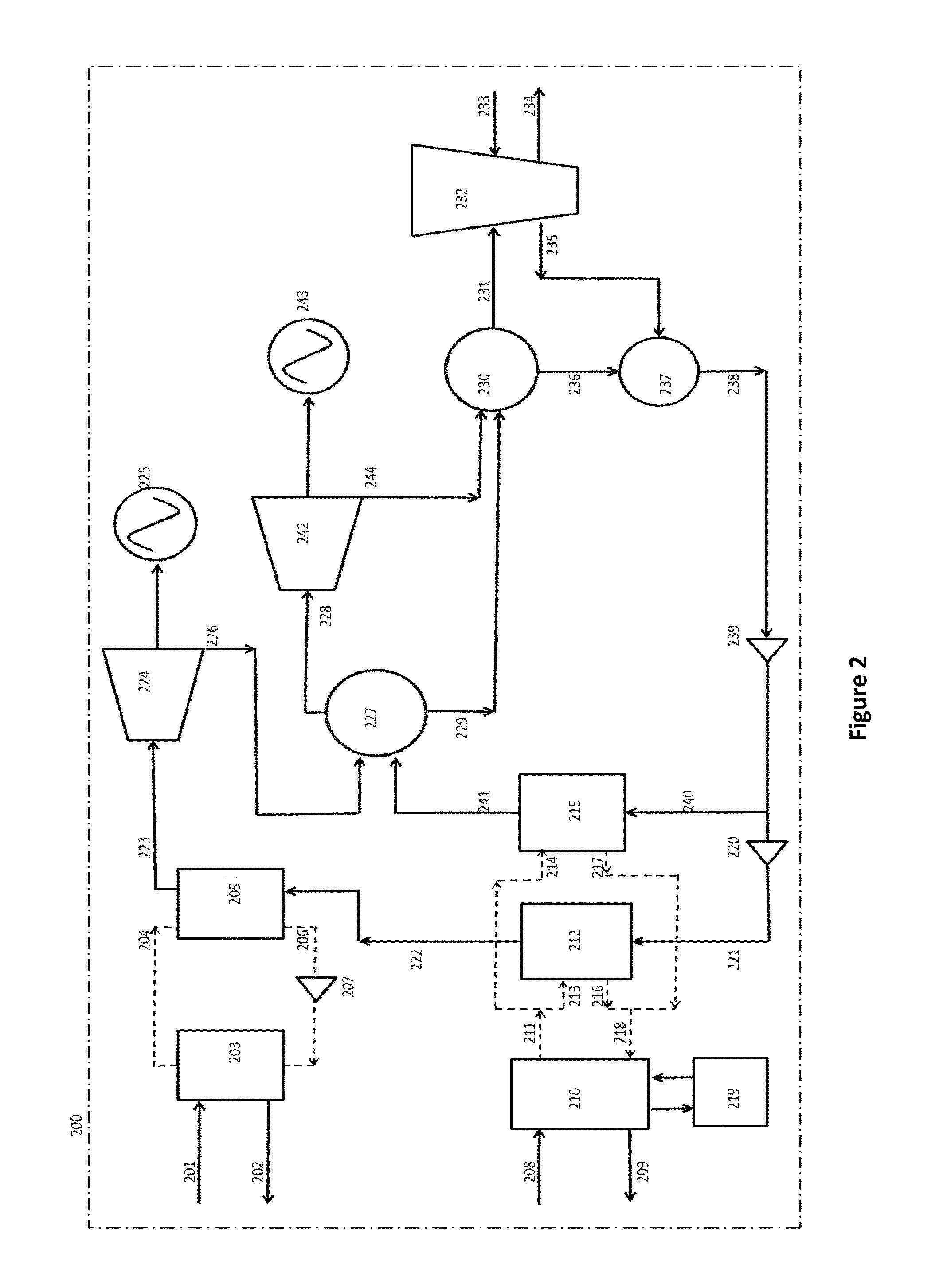Multiple organic rankine cycle system and method
a rankine cycle and organic technology, applied in the field of multiples, can solve the problems of waste heat energy, affecting the performance, efficiency and cost effectiveness of the system, and unwanted heat generation, so as to achieve the greatest possible conversion efficiency and economic return, increase system efficiency, and maintain power output.
- Summary
- Abstract
- Description
- Claims
- Application Information
AI Technical Summary
Benefits of technology
Problems solved by technology
Method used
Image
Examples
Embodiment Construction
[0062]FIG. 2 depicts a multi-pressure ORC system 200 that utilizes two expanders 224, 242 operating at different pressures. This configuration is an embodiment of a dual-pressure or 2P ORC system.
[0063]By way of example and not limitation, this embodiment as described is suitable for use with a J316 ICE engine, as specified and manufactured by the Jenbacher Gas Engine division of General Electric Energy, as the prime mover. Those skilled in the art will recognize that different configurations suitable for other applications are clearly envisioned by this invention, such as the use of prime movers including but not limited to ICEs with power outputs ranging from 250 kW to 8,000 kW. In this embodiment, the J316 serves a single prime mover for the 2P ORC system and supplies heat energy from both exhaust gas flow and jacket cooling water.
[0064]Heat energy contained in the exhaust gas flow of the prime mover is supplied at 201 to a thermal oil heat transfer subsystem 203 operatively coup...
PUM
 Login to View More
Login to View More Abstract
Description
Claims
Application Information
 Login to View More
Login to View More - R&D
- Intellectual Property
- Life Sciences
- Materials
- Tech Scout
- Unparalleled Data Quality
- Higher Quality Content
- 60% Fewer Hallucinations
Browse by: Latest US Patents, China's latest patents, Technical Efficacy Thesaurus, Application Domain, Technology Topic, Popular Technical Reports.
© 2025 PatSnap. All rights reserved.Legal|Privacy policy|Modern Slavery Act Transparency Statement|Sitemap|About US| Contact US: help@patsnap.com



